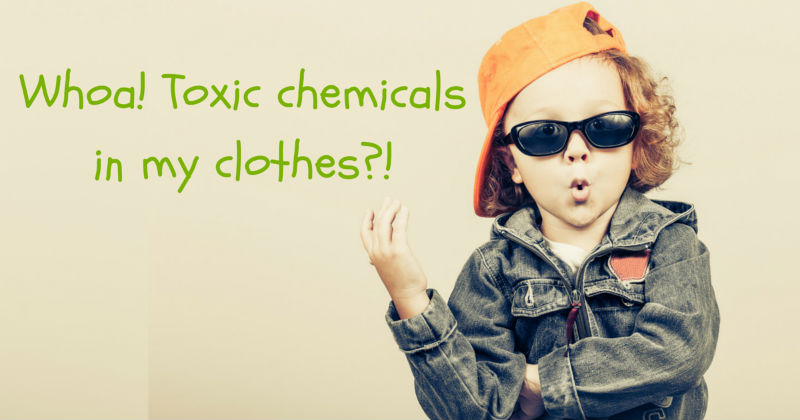The warm sweatshirt or fun pajamas your child is wearing could contain harmful toxic chemicals according to new chemical testing by the Washington State Department of Ecology (Ecology). The results of this testing add up to one conclusion – there are too many toxic chemicals in kids’ clothes.
We don’t often think of children’s clothing as a source of toxic chemical exposure. But toxic chemicals are used in clothing for a variety of uses, including dyes, screen printing, stain protection, and waterproofing.
Ecology purchased almost 300 items of children’s apparel, including clothes, jewelry, and shoes, and first screened, then tested the items, for metals, phthalates, and solvents. The results give serious cause for concern.
Metals
Forty-eight out of 50 clothing samples tested contained the metals molybdenum, cobalt, arsenic, lead, cadmium, or antimony – all listed as Chemicals of High Concern to Children in Washington.
- Antimony was detected in almost ¾ of the samples tested, most often in polyester clothing.
- Lead was detected in about 1/2 of the samples tested.
- One bracelet violated Washington’s 90 ppm standard for lead in children’s products.
- Arsenic was detected in 1/3 of the samples tested.
Phthalates
Almost 1/3 of the samples tested contained one or more of six phthalates – BBP, DEHP, DBP, DEP, DnHP, and DINP – all listed as Chemicals of High Concern to Children in Washington.
- 4 samples (plastic in slippers, a bracelet, a girl’s handbag and a boy’s wallet) containing DEHP violated Washington’s 1,000 ppm standard.
- A plastic wallet contained 3.6% DEHP.
- One plastisol print on a set of pajamas contained 4 phthalates.
- DEHT believed to be a less toxic substitute for phthalates – was found in 46 out of 50 samples.
Solvents
One quarter (25%) of samples tested contained one or more of the solvents ethylene glycol, MEK, or D4 (octamethylcyclotetrasiloxane) – all listed as Chemicals of High Concern to Children in Washington.
- Children’s pajamas and shirts were the product types solvents were most often found in.
- Plastisol prints and fabrics were the components solvents were found in.
What Should Parents Do?
Many of these chemicals are unnecessary. Manufacturers of these products have a responsibility to stop using unnecessary toxic chemicals, especially ones already listed as Chemicals of High Concern to Children in Washington.
To minimize your family’s exposure to toxic chemicals in clothing, follow our tips for safer clothing.
The full Ecology report on the testing project – Chemicals of High Concern to Children in Children’s Clothing, Footwear, and Accessories is available online: https://fortress.wa.gov/ecy/publications/SummaryPages/1503039.html.




